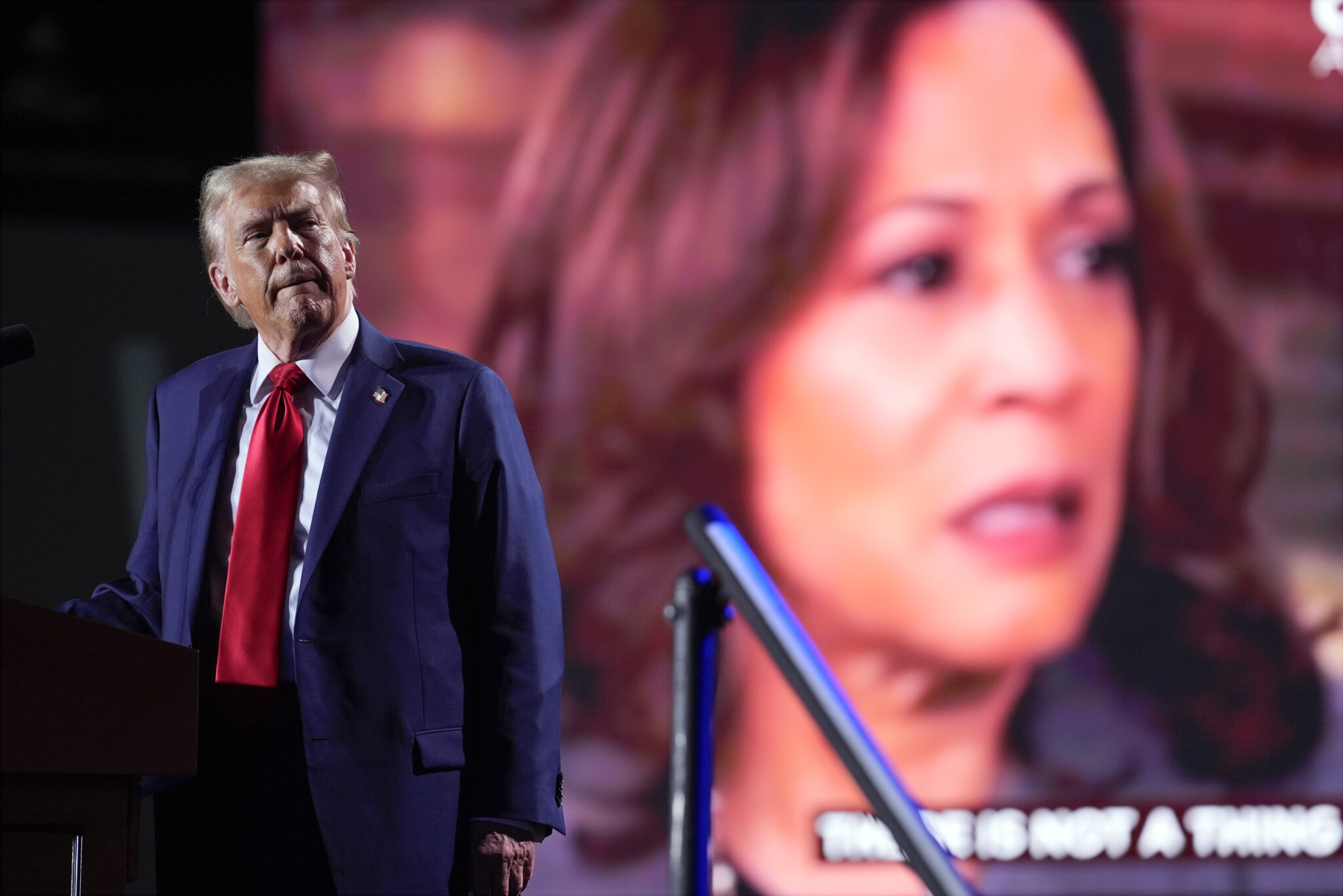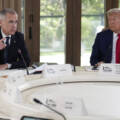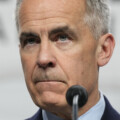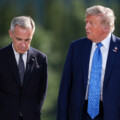The 2024 American election has come and gone, but the extent of its impact, not only on the U.S. but the world at large, is still being worked out. A momentous turning point, it is worth reflecting on how the election unfolded and what it all means moving forward. The following retrospective analysis is part one of a two-part series.
The venerable columnist George Will remarked of the recent American presidential election that there had been no previous one in which both candidates were so weak. Indeed each groaned under historic levels of unpopularity. It is conventionally held that the last thing a party should want is a candidate with a high disapproval rating, implying as it does so many people who would not consider voting for him. Both Donald Trump and Kamala Harris were saddled with such inauspicious ratings. Indeed a great many voters were so-called double haters, unfavourably disposed toward both candidates. A political scientist from Mars might have scratched his green trapezoidal head and wondered how both parties could have nominated such losers. This set the stage for America’s first-ever double Extreme Makeover election.
I owe my knowledge of extreme makeovers to my dazzling daughter-in-law, Farida Guechoud. An Algerian Berber by birth, she had met our son (at the Bibliothèque Nationale, yet!) when both were studying in Paris. After their wedding, she faced the problem that he was now studying in the States where she did not yet have permission to live. So she came to live with us for several months, with an eye to improving her rudimentary English. She spoke with us, took courses, and watched lots of English-language television. It was thus that she discovered, and became fascinated with, Extreme Makeover. The concept of the show was that an ordinary young woman, without any claim to special charm or beauty, would receive an “Extreme Makeover,” turning her from an ugly duckling into a swan. The show ended with the presentation of the New Her to her family and friends, who could barely recognize her, resplendent as she was with her new coiffure, cosmetics, and costume.
While Farida was in need of no such makeover, the notion entranced her. Student of philosophy as she was, it also raised all kinds of questions. Would she who was made over live happily ever after? Would the makeover stick, and the young woman enjoy a new persona? The show, ending as it always did with the unveiling of the New Her, left these questions unanswered.
As it happened each of the presidential candidates was in need of such a makeover, and both, in differing degrees, received one. First, Mr. Trump. Already repudiated by voters at the conclusion of his first term of office, he found himself in a situation from which only one former president had ever recovered. Grover Cleveland, defeated at the end of his first term in 1884, had rallied to gain re-election in 1888. But that was then, this was now. True, feelings ran high in the wake of the Civil War and Reconstruction. Cleveland, however, who is regarded as one of the better presidents, was a placatory figure, not a disruptive one. A rare successful Democrat in an era dominated by Republicans, he knew how to co-operate with his opponents.

Republican presidential nominee former President Donald Trump speaks to reporters in the spin room after a presidential debate with Democratic presidential nominee Vice President Kamala Harris, Tuesday, Sept. 10, 2024, in Philadelphia. Matt Slocum/AP Photo.
Donald Trump
Trump was of course quite the opposite. In 2020 he had lost the popular vote to Mr. Biden—himself a rather weak opponent—by seven million votes, or 4.5 percentage points. He had also lost decisively in the Electoral College. He had managed to lose both Arizona and Georgia, states in which his party had been entrenched, as well as all three of the Blue Wall states that had voted for him four years earlier. Worst of all, he had maintained the claim that the election had been stolen from him—a claim rejected by a decided majority of voters—and had staged the attempted coup of Jan. 6, 2021. When he left office later that month only 34 percent of the public approved of his performance as president. Surely, thought the seemingly sensible among us (to whom I must confess that I belonged), Trump had finally cooked his own goose. Even followers as credulous and a party as prostrate as his would now feel compelled to move on from him.
We were wrong, of course: the servility of all but a handful of Republican officeholders proved boundless. Fed by the fidelity of Trump’s core, hundreds of politicians who knew better parroted the claims of a stolen election and frustrated all attempts to call Trump to account for the events of January 6. Yet the off-year elections of 2022 were, all things considered, a victory for the Democrats, and a setback for Trump and the candidates he supported. And the mounting lawsuits against him, both civil and criminal, would shine a harsh light on his legion of alleged offenses. Unprecedented as this was—no previous ex-president had been criminally prosecuted for anything—how could so many albatrosses not prove too heavy for even Trump’s thick neck?
Here again, those of us who were expecting Trump’s downfall proved too hopeful. In the climate of partisan distrust pervading American life, even well-founded charges were discounted as mere political theatre. And there was truth, after all, to the claim that these charges were politically motivated. With the exception of Jack Smith, the lead in the Jan. 6 cases, all the prosecutors who brought them were known Democrats. And, as prosecutors will do, they demonstrated great virtuosity in elevating the charges to the maximum level.
That is just the way that American justice works; such hijinks by the prosecutors in no way precluded that Trump was guilty of grave crimes. Yet it was unfortunate for the Democrats that the only criminal case to be adjudicated prior to the election was the one involving hush money paid to a porn star. In the present state of American public morality (or the absence thereof) no one was outraged at such peccadillos, which if anything burnished Trump’s bad-boy image. And yes, the trial resulted in 34 felony convictions, a figure loudly bruited by the Democrats. But really now: 34 felony convictions for paying hush money to a porn star? Such overkill only stoked the perception that this was political persecution; a conspiracy just like the theft of the election, and one intended to affront the will of the people.
Yet for all this Trump remained a very weak candidate, submerged in a flood of antipathy. However well he played to his base, he could count on little support outside it, and under 40 percent of the vote will not suffice to win an election. His handlers therefore devised the first of the makeovers that redefined this election. They proposed a kinder and gentler Trump.
This new Trump was most conspicuously on display in his acceptance speech at the Republican National Convention. This was Trump’s big moment, his chance to define his campaign before his largest audience of viewers. Trump began the speech in a wholly novel spirit of amity. He preached, of all things, concord and reconciliation. And as he began, so he concluded, all sweetness and light and resolve to be president of all the people. This was a highly significant change. This new Trump was as unrecognizable as any contestant on Extreme Makeover.
Well, maybe not entirely unrecognizable. Even in this, his maiden address as a madeover man, he could not repress his usual habit of wandering from the teleprompter in directions uncharted by his advisors. And the more he rambled, the nastier he got, as he regurgitated his customary grievances. Only as the speech approached its end did he return to the teleprompter and the scripted conciliation. Now he was again the president-to-be of all Americans. Donald Trump, the pristine yellowish candidate or the newly rouged one? We will return to him shortly.








